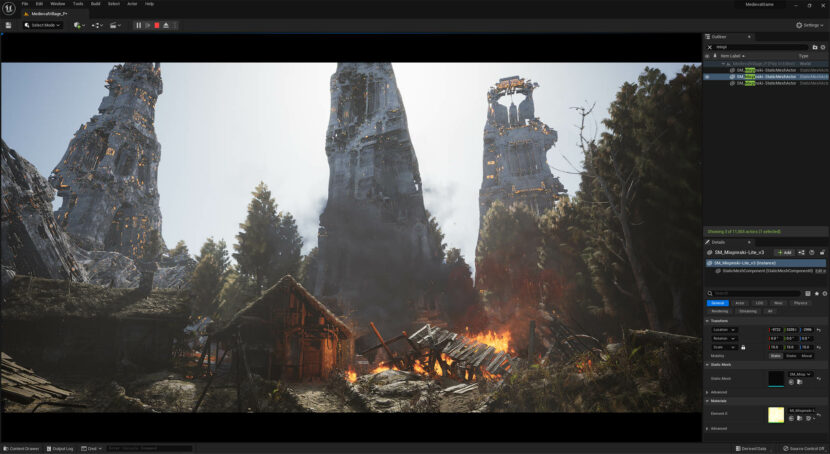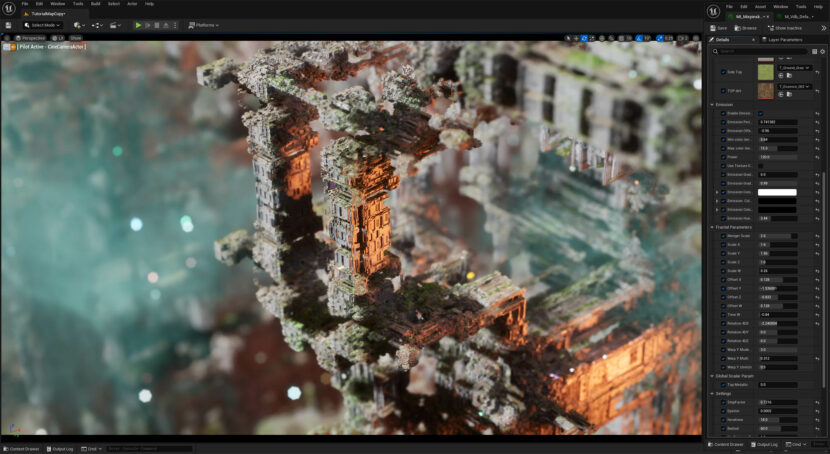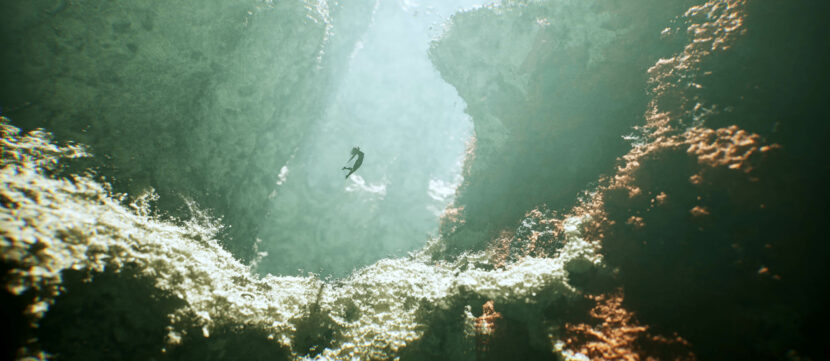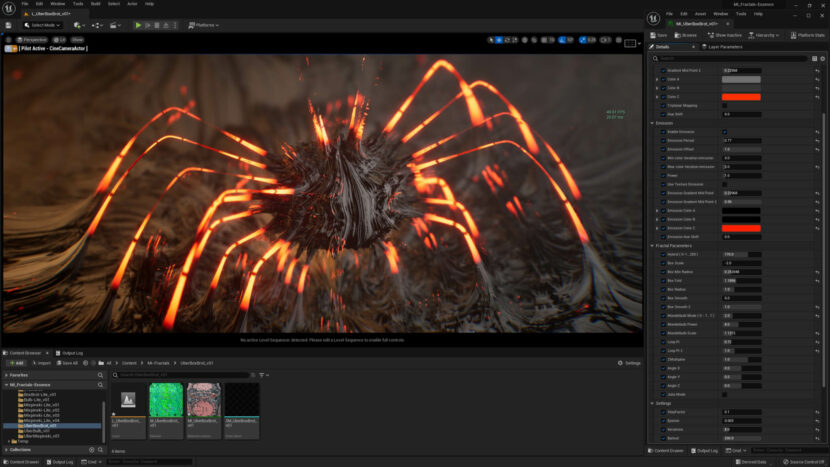Machina-infinitum is a team founded in 2018 by fractal expert Matteo Scappin and VFX and fractal artist Jesper Nybroe. The team has recently released their first 3d Fractal collection for Unreal 5, Machina-Fractals: Essence, which lets artists explore complex fractals in real-time. Combined with the improvements in UE5 this results in stunning visuals, with all the complexity, self-referential detail, and organic validity that makes fractals both strangely familiar and simultaneously completely unexpected.
When loaded in UE5 the abstract procedural environment plugin has over 30 parameters for each fractal material. These include different transformation modes that can be combined to control the color, scale, and emission. As the team is keen for users to experiment, all formulas and variables can be animated and adjusted. Given this happens in real-time the Machina Fractals allow for the most visually complex environments or use in VJ-ing in a live visual performance.
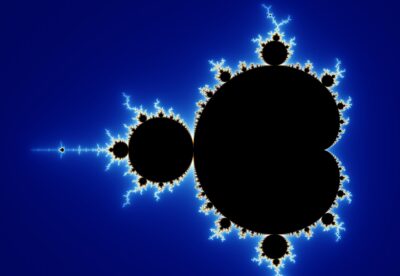
From a VFX perspective, they provide a wonderfully rich environmental tool that could easily be used in virtual production or in a narrative piece. The nature of fractals is remarkably organic, but they derive from repeating a simple mathematical process over and over in an ongoing recursive loop. Driven by this recursion, fractals are infinitely complex patterns that are self-similar across different scales. The term fractal was coined by the mathematician Benoît Mandelbrot in 1975, in his French paper Les Objets Fractals: Forme, Hasard et Dimension (Fractal Objects: Form, Chance and Dimension). Today the Mandelbrot Set is still one of the most famous fractals.
What makes Machina-Fractals so remarkable is the combination of the work the team has done and things such as global illumination in UE5. The plugin still works in UE4 but without GI the images look flat and less interesting. This coupled with UE5 performance, depth of field, and atmospherics produces remarkable and dynamic imagery. The Machina-Fractals plugin took three months to write. The team started with a simple sphere render and then using ray marching, the team solved shadows, reduced noise, and developed their database of interesting dynamic mathematical formulas. But it was on the 20th of February that the team first integrated a structural fractal into a medieval environment from Quixel. “Because that showed you can integrate fractals in a 3D environment and get this incredible dystopian world,” explains Matteo Scappin. “That was at Jasper’s studio, and I remember that evening very well, – it was quite a moment.”
“Clouds are not spheres, mountains are not cones, coastlines are not circles and bark is not smooth,” he wrote in the Fractal Geometry of Nature. Nature is irregular and fragmented; nature does not just exhibit a high degree of complexity but a special type of complexity with distinct levels of scale that seems to offer patterns that are both different and reference itself. In mathematics, these fractals exhibit both randomness and statistical regularity. The term fractal comes from the Latin adjective fractus, which refers to breaking or creating irregularity. Thus, in the UE5 the Machina Fractals images appear both to have order but be fractured and detailed in a very naturally ‘random’ way.
As this fracturing is so familiar to us in nature, the UE5 images seem utterly believable while also being so utterly new and exotic. “It’s brilliant that we have these wonderful things, – Quixel and megascans – it is just so easy and fast to build up good-looking environments and have light interact with it,” Jesper Nybroe comments. “And it works just brilliantly with Lumen- it is just absolutely stunning.”
The fractal parameters can be linked with blueprints. That allows VJs or interactive installations to be triggered by external audio or signals. Music can drive animation parameters on a dance floor or in a game, when a player moves near a door it could trigger a live fractal, “it’s fully customizable, much any other thing in a game. If a player steps somewhere then a whole city could be built and animated if you really wanted,” adds Scappin.
The plugin ideally requires at least an RTX 2080GPU level of graphics power (with at least 8GB of memory), which is not a particularly high bar in today’s GPU environment, for example on an NVIDIA GTX1080 the software still works it is just unlikely to be fully real-time. While the team are themselves working with NVIDIA hardware, the program works well on a Mac hardware and with AMD.
To help people explore fractals, there are nine fundamentally different setups that users can build from and animate in Sequencer. The team has ‘dozens’ of new and different fractals they are keen to roll out, which will be free to those who buy now. The next big thing on their R&D roadmap is collisions inside UE5, Scappin half-jokingly says that “collisions are the holy grail right now, – we’ve got to get collisions working!” At the moment they have it working in their lab, but they are not running fast enough yet to be released. The next item in the roadmap is volumetric fractals. General volume visualization of volumetric fractal would allow for a space within the limits of mathematical equations to be in constant motion and would appear to be simultaneously structured and in chaos. The volumes would diffuse light in a highly natural way, but it is extremely complex. Again, the team has these working in non-real-time in the Octane renderer and they are working to get them running in UE5.

